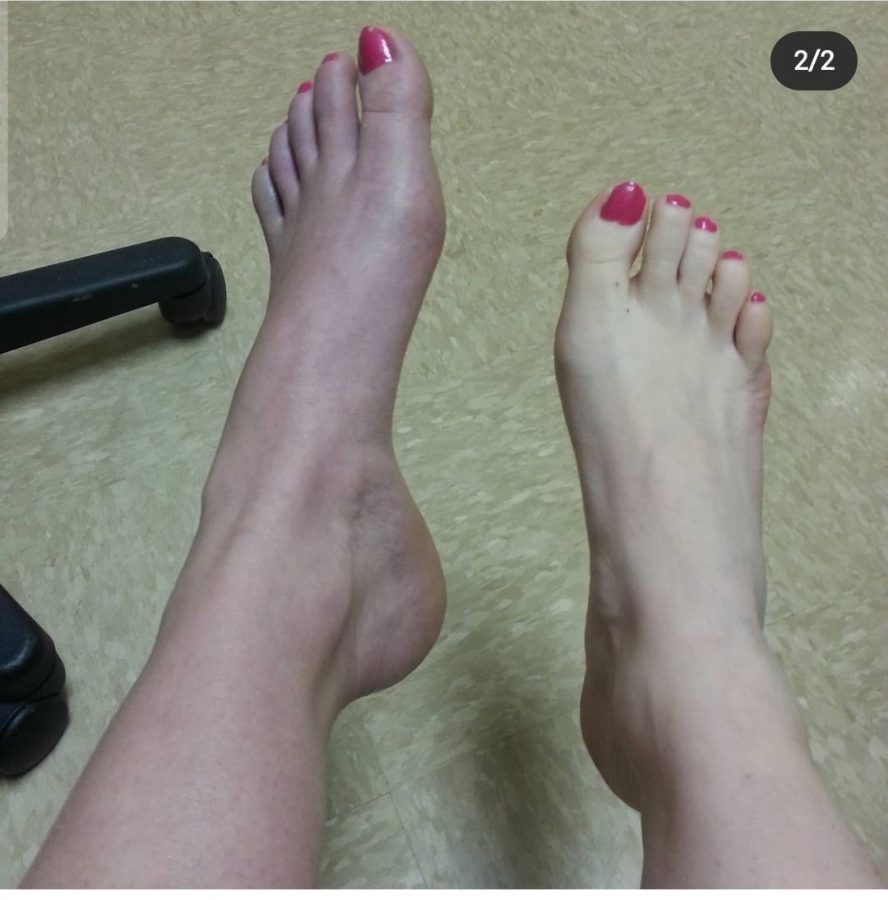FightForACure- RSD/CRPS
RSD/CRPS example of symptoms.
January 16, 2021
I could almost guarantee that you’ve never heard of RSD, or better known as CRPS, and can sometimes be known as Causalgia. RSD/CRPS is a very painful disease that not many have. In fact, this certain disease is rare, and less than 200,000 people are diagnosed in the United States. RSDCRPSdoesntownme.com defines RSD/CRPS is a “degenerative systemic nerve disease that causes extreme pain, swelling, changes in the bones, muscles, and tissue.”
Okay. You might be wondering exactly what RSD or CRPS is. RSD is a rare disease that causes extremely painful pain in a limb of the body. It is caused due to an injury of some sort. The most common places to get RSD/CRPS is in the legs, hip, arm, or shoulder. But sometimes the pain may go further past where you were injured and can go to other places of the body. Like I said before, this disease is extremely painful. RSD/CRPS measures anywhere from 42 to 45 out of 50 on the McGill pain index. It is known as the most painful form of chronic pain that exists and sadly, it has no cure.
I interviewed someone who suffers from RSD and they said, “The pain feels like you’ve injected gasoline into your veins and lit a match…It feels like you are burning from the inside out. I was 24 when I got RSD and I fell and bruised my leg on a coffee table. Two weeks later, I couldn’t walk and my leg was black. It took a long time to get diagnosed and takes a long time because it’s rare. With RSD you have periods of remission which means you drop to say stage one. Our periods of remission mean we can do more things but, it doesn’t necessarily mean less pain. I have to take a lot of rest breaks, elevate my feet when I sit down, and can’t be on my feet for long periods of time. In my case, it did spread from my left foot all the way up to my hip and, to my right leg from my knee down. I also have permanent muscle and bone damage. Sometimes, I can’t wear certain clothes because the fabric causes pain. In my case, I have severe allodynia which means you feel pain from things that normally shouldn’t cause pain. For instance, fabric touching your leg, wind, vibration from vacuuming the floor, the shower water, shaving legs, or touch period, etc.”
Stages of RSD:
(They don’t have to be in this order and they will suffer all 3 stages at some point… Sometimes they go in and out of order during your life. In each stage, the pain is constant. The pain people feel is nerve pain, and currently, there are no medications to help with the pain.)
- Acute stage- Can last for months. Some symptoms are severe burning, pain, sensitivity to touch, swollen joints, skin changes, skin color changes, etc.
- Dystrophic stage- Increases in pain, muscles weaken, can spread to other limbs
- Atrophic stage- Can last for years! It is often permanent and disabling. The pain is even worse. It can lead to deformities, for example, a clubbed hand or foot. It also leads to muscle atrophy and the breakdown of the skin and bones.
“People are very mean to me because I look like I should be young and healthy. And when I go out on good days and do errands and things, I have to usually park in the handicap because I can’t walk far and people say things and are rude and stare. I don’t like to use my cane because of all of the people commenting and staring…it’s embarrassing.” -RSD patient
Raise awareness for this rare disease every November, which is RSD awareness month. And color the world orange day is the first Monday of November.
#burningforacure
Research for yourself:
https://www.webmd.com/brain/what-is-reflex-sympathetic-dystrophy-syndrome
https://www.health.ny.gov/diseases/chronic/reflex_sympathetic/


